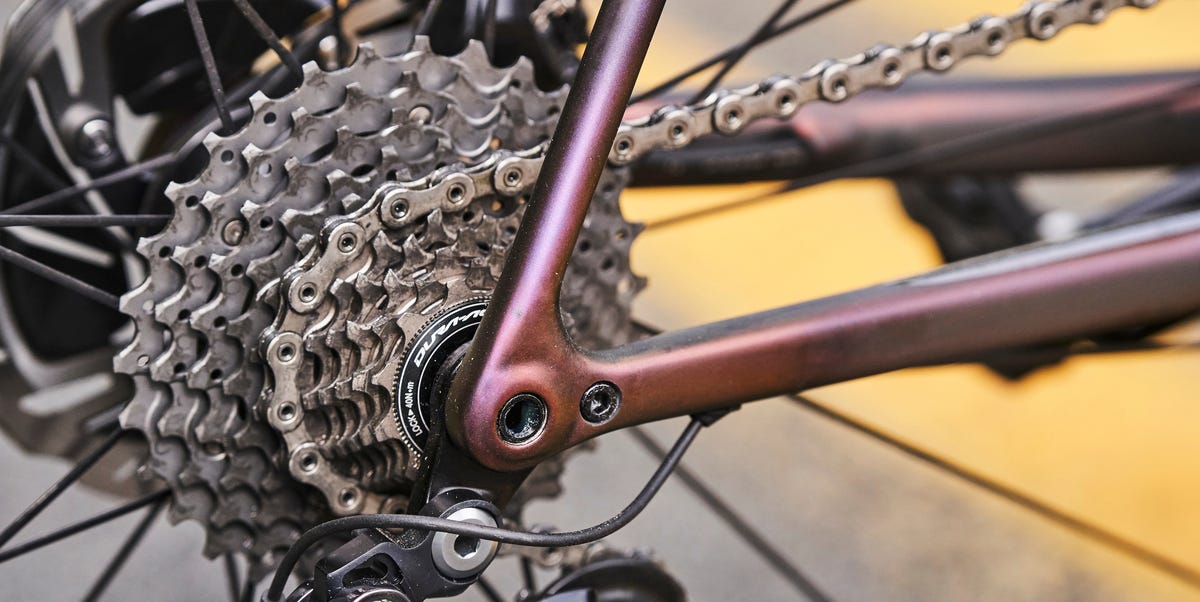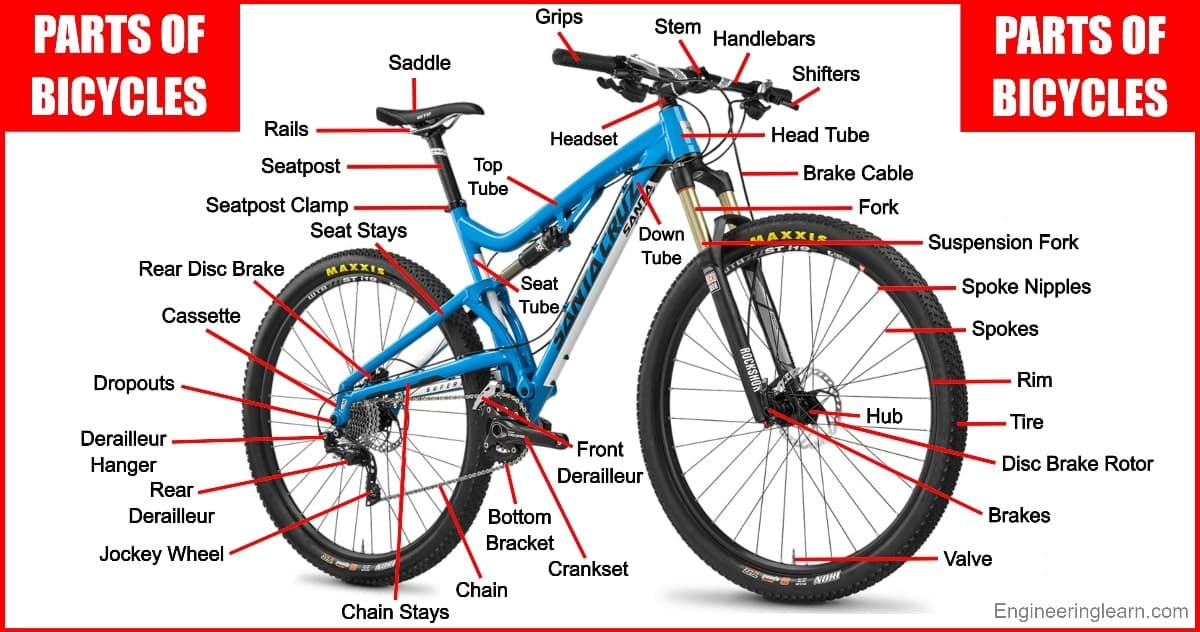Understanding the Anatomy of a Bicycle
When it comes to cycling, having a deep understanding of the various parts of the bike is crucial for a safe, enjoyable, and efficient ride. Knowing the different components of your bike can improve your overall riding experience, enhance safety, and make maintenance a breeze. From the frame to the wheels, gears, and brakes, each part plays a vital role in the smooth operation of your bike. In this comprehensive guide, we’ll delve into the world of bike components, exploring the main parts of the bike and how they work together to create a seamless riding experience. By understanding the different parts of the bike, you’ll be able to identify potential issues, make informed purchasing decisions, and optimize your bike’s performance for a more enjoyable ride.
How to Identify and Inspect Your Bike’s Frame
The bike frame is the backbone of your bicycle, providing the structural foundation for all other components. Understanding the different types of frames, their materials, and how to inspect them is crucial for a safe and enjoyable ride. There are several types of frames, including road, mountain, and hybrid, each designed for specific riding styles and terrains. Frames can be made from a variety of materials, such as carbon fiber, aluminum, and steel, each with its own unique characteristics and benefits. When inspecting your frame, look for signs of damage or wear, such as cracks, dents, or rust. Regular inspections can help prevent accidents and ensure your bike is running smoothly. By knowing your frame inside and out, you’ll be able to identify potential issues and make informed decisions when it comes to maintenance and upgrades.
The Role of Wheels and Tires in Your Bike’s Performance
Wheels and tires are critical components of a bicycle, playing a significant role in speed, comfort, and safety. The right wheels and tires can make a huge difference in your riding experience, while the wrong ones can lead to a sluggish, uncomfortable, and potentially dangerous ride. There are various types of wheels, including rim and disc wheels, each with its own advantages and disadvantages. Tires also come in different varieties, such as road, mountain, and hybrid tires, designed for specific riding styles and terrains. When choosing wheels and tires, consider factors such as weight, durability, and traction. Regularly inspecting and maintaining your wheels and tires is also crucial to ensure optimal performance and safety. By understanding the different types of wheels and tires and how to choose the right ones for your bike, you’ll be able to optimize your ride and enjoy a more comfortable, efficient, and safe cycling experience. Remember, the parts of the bike work together in harmony, and the right wheels and tires are essential for a smooth and enjoyable ride.
Braking Systems: Understanding Your Bike’s Stopping Power
A reliable braking system is a critical component of a bicycle, ensuring the safety of the rider and others on the road. There are several types of braking systems, each with its own advantages and disadvantages. Rim brakes, for example, are lightweight and easy to maintain, but may not provide the same level of stopping power as disc brakes. Disc brakes, on the other hand, offer superior stopping power, but can be heavier and more complex to maintain. Hydraulic brakes offer a high level of precision and control, but can be more expensive and require more frequent maintenance. When choosing a braking system, consider factors such as riding style, terrain, and weather conditions. Regular maintenance and adjustment of the braking system are also crucial to ensure optimal performance and safety. By understanding the different types of braking systems and how to maintain and adjust them, riders can enjoy a safer and more confident ride. Remember, the parts of the bike work together in harmony, and a reliable braking system is essential for a safe and enjoyable ride.
The Gear System: How to Shift Smoothly and Efficiently
The gear system is a critical component of a bicycle, enabling riders to tackle various terrains and riding styles with ease. A well-functioning gear system can make a significant difference in a rider’s performance, comfort, and overall riding experience. There are several types of gears, including derailleur and internal gears, each with its own advantages and disadvantages. Derailleur gears, for example, offer a wide range of gear options, but can be more prone to mechanical issues. Internal gears, on the other hand, provide a more streamlined and low-maintenance option, but may offer limited gear options. Understanding how to shift smoothly and efficiently is also crucial, as it can help riders conserve energy, maintain speed, and avoid mechanical issues. Tips for shifting smoothly include using the correct gear for the terrain, shifting gradually, and avoiding cross-chaining. By understanding the different types of gears and how to shift smoothly and efficiently, riders can optimize their performance and enjoy a more comfortable and enjoyable ride. Remember, the parts of the bike, including the gear system, work together in harmony to provide a seamless riding experience.
Pedals and Cranksets: The Heart of Your Bike’s Power
The pedals and cranksets are the heart of a bicycle’s power, responsible for transferring energy from the rider’s legs to the wheels. Understanding the different types of pedals and cranksets is crucial for optimizing performance, comfort, and efficiency. Pedals come in various forms, including platform pedals, which provide a wide surface area for comfort and stability, and clipless pedals, which offer a secure connection between the shoe and pedal. Cranksets, on the other hand, come in single, double, and triple chainring configurations, each designed for specific riding styles and terrains. A well-maintained pedal and crankset system can improve pedaling efficiency, reduce fatigue, and enhance overall riding experience. When choosing pedals and cranksets, consider factors such as riding style, terrain, and personal preference. By understanding the role of pedals and cranksets, riders can optimize their performance and enjoy a more comfortable and efficient ride. Remember, the parts of the bike, including the pedals and cranksets, work together in harmony to provide a seamless riding experience.
Handlebars and Stems: Finding the Perfect Fit
Handlebars and stems are crucial components of a bicycle, playing a vital role in comfort, control, and safety. The right handlebars and stems can significantly improve riding experience, while poorly fitted ones can lead to discomfort, fatigue, and even accidents. When choosing handlebars, consider factors such as width, material, and ergonomic design. For example, drop handlebars are ideal for road bikes, while flat handlebars are better suited for mountain bikes. Stems, on the other hand, come in various lengths and angles, and should be chosen based on the rider’s height, riding style, and bike type. A well-fitted handlebar and stem system can improve riding posture, reduce fatigue, and enhance overall control. By understanding the importance of handlebars and stems, riders can optimize their bike’s fit and enjoy a more comfortable and enjoyable ride. Remember, the parts of the bike, including the handlebars and stems, work together in harmony to provide a seamless riding experience.
Accessories and Add-Ons: Customizing Your Bike to Your Needs
Customizing your bike with the right accessories and add-ons can significantly enhance your riding experience. From essential safety features like lights and reflectors to convenience items like water bottle holders and bike computers, there are numerous options available to suit your specific needs. When choosing accessories, consider factors such as your riding style, terrain, and personal preferences. For example, commuters may benefit from adding fenders and mudguards, while mountain bikers may prefer to install suspension seatposts and dropper posts. Additionally, consider the compatibility of accessories with your bike’s components, such as the type of brakes and gears. By selecting the right accessories and add-ons, riders can optimize their bike’s performance, comfort, and safety. Remember, the parts of the bike, including accessories and add-ons, work together to provide a seamless riding experience. By understanding the various components and customizing your bike accordingly, you can unlock your full riding potential and enjoy a more enjoyable and efficient ride.






